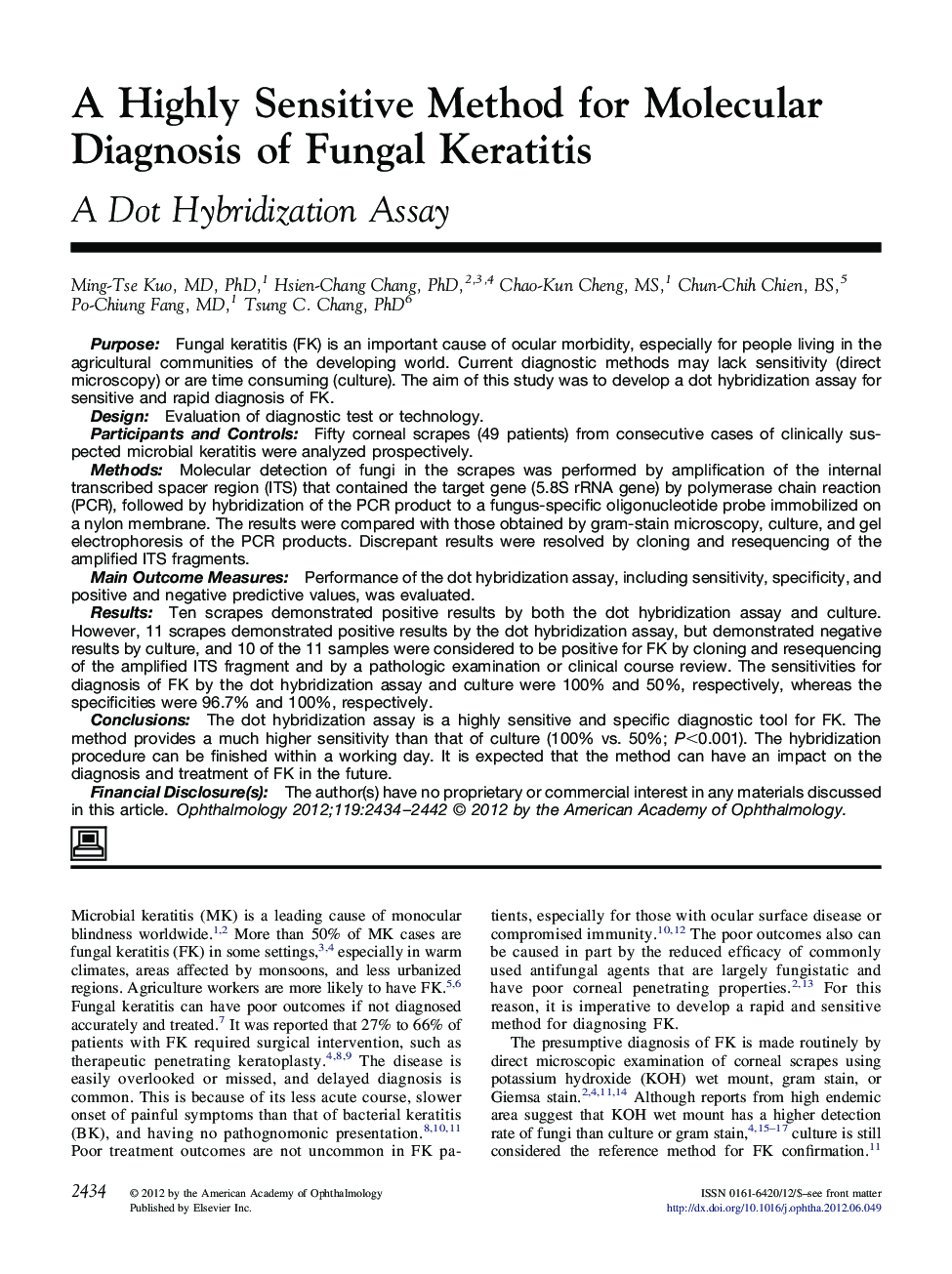| Article ID | Journal | Published Year | Pages | File Type |
|---|---|---|---|---|
| 4026992 | Ophthalmology | 2012 | 9 Pages |
PurposeFungal keratitis (FK) is an important cause of ocular morbidity, especially for people living in the agricultural communities of the developing world. Current diagnostic methods may lack sensitivity (direct microscopy) or are time consuming (culture). The aim of this study was to develop a dot hybridization assay for sensitive and rapid diagnosis of FK.DesignEvaluation of diagnostic test or technology.Participants and ControlsFifty corneal scrapes (49 patients) from consecutive cases of clinically suspected microbial keratitis were analyzed prospectively.MethodsMolecular detection of fungi in the scrapes was performed by amplification of the internal transcribed spacer region (ITS) that contained the target gene (5.8S rRNA gene) by polymerase chain reaction (PCR), followed by hybridization of the PCR product to a fungus-specific oligonucleotide probe immobilized on a nylon membrane. The results were compared with those obtained by gram-stain microscopy, culture, and gel electrophoresis of the PCR products. Discrepant results were resolved by cloning and resequencing of the amplified ITS fragments.Main Outcome MeasuresPerformance of the dot hybridization assay, including sensitivity, specificity, and positive and negative predictive values, was evaluated.ResultsTen scrapes demonstrated positive results by both the dot hybridization assay and culture. However, 11 scrapes demonstrated positive results by the dot hybridization assay, but demonstrated negative results by culture, and 10 of the 11 samples were considered to be positive for FK by cloning and resequencing of the amplified ITS fragment and by a pathologic examination or clinical course review. The sensitivities for diagnosis of FK by the dot hybridization assay and culture were 100% and 50%, respectively, whereas the specificities were 96.7% and 100%, respectively.ConclusionsThe dot hybridization assay is a highly sensitive and specific diagnostic tool for FK. The method provides a much higher sensitivity than that of culture (100% vs. 50%; P<0.001). The hybridization procedure can be finished within a working day. It is expected that the method can have an impact on the diagnosis and treatment of FK in the future.Financial Disclosure(s)The author(s) have no proprietary or commercial interest in any materials discussed in this article.
